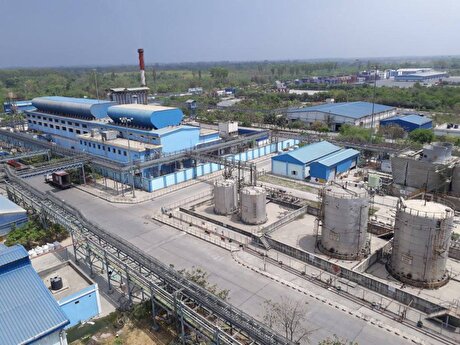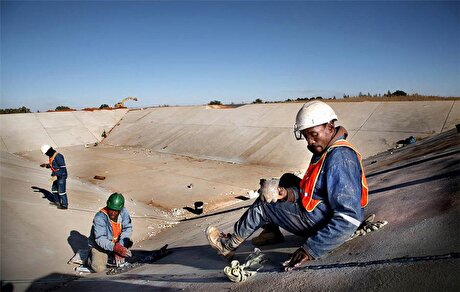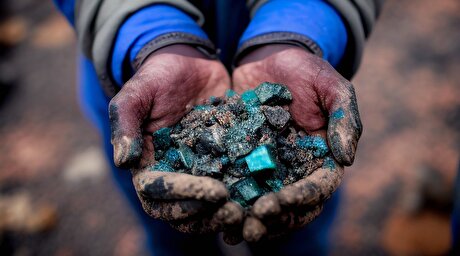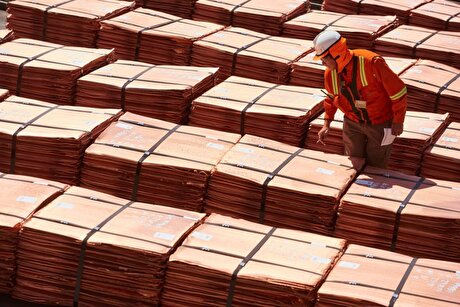
Iran Unveils 5 New Energy, Material Achievements


Adressing the ceremony to mark the unveiling of the 5 industrial and research plans of the ESDO, General Hatami said that the Defense Ministry will keep supporting researchers, applied sciences, and networks of experts to forward the causes of the resistance economy in the country.
Saying that ESDO registers several technology patents annually, he also hailed the organization’s achievements in providing the armed forces’ needs in areas of energy and complicated mining materials.
Hatami also praised accomplishments of the ESDO in areas of research, development of systems and complicated hybrid machines, energy generating systems, restoring devices and systems, and services for efficient use of energy.
He added that the ESDO has the capacity equal to 100 TFPs (total-factor productivity).
The five new plans opened today enable the ESDO to produce antimony, recycle lithium-ion battery, semi-industrial production of helium gas, and production of organic fossil fuels, he recounted.
Last Wednesday, Iranian scientists declared that they had manufactured ultracentrifuges with the capability of spinning 60,000rpm, to become the third nation with the needed hi-tech to manufacture such centrifuges after the US and Japan.
"Now we are able to build ultracentrifuge with the capability of spinning 60,000rpm which is considered as a very big success because the US and Japan were the only countries capable of producing the machine," Managing-Director of the knowledge-based Edman Tak company Kia Pasha said, addressing a ceremony to unveil the machine in Alborz province near Tehran.
He explained that ultracentrifuges can be applied in food and drug industries but their main use is in research as well as oil, gas and petrochemical industries to separate particles with different density.
Ultracentrifuges are laboratory centrifuges with rotors that spin at very high speeds, usually ranging from 60,000 RPM and 200,000 x g to 150,000 RPM and 1,000,000 x g. Ultracentrifuges are segmented into two main classes, preparative and analytical.
Preparative ultracentrifuges isolate or pellet biological particles, viruses, organelles, membranes and biomolecules such as DNA, RNA and lipoproteins.
Analytical ultracentrifuges use detection systems to monitor spinning samples in real time to determine sedimentation velocity and equilibrium used to determine shape and mass of macromolecules.


Hindustan Zinc to invest $438 million to build reprocessing plant

Gold price edges up as market awaits Fed minutes, Powell speech

Glencore trader who led ill-fated battery recycling push to exit

UBS lifts 2026 gold forecasts on US macro risks

Roshel, Swebor partner to produce ballistic-grade steel in Canada

Iron ore price dips on China blast furnace cuts, US trade restrictions

EverMetal launches US-based critical metals recycling platform

US hikes steel, aluminum tariffs on imported wind turbines, cranes, railcars

South Africa mining lobby gives draft law feedback with concerns

Trump raises stakes over Resolution Copper project with BHP, Rio Tinto CEOs at White House

US seeks to stockpile cobalt for first time in decades

Trump weighs using $2 billion in CHIPS Act funding for critical minerals

Nevada army depot to serve as base for first US strategic minerals stockpile

Emirates Global Aluminium unit to exit Guinea after mine seized

Tailings could meet much of US critical mineral demand – study

Codelco cuts 2025 copper forecast after El Teniente mine collapse

Glencore targets 1Mt of copper in Argentina over coming decade

Viridis unveils 200Mt initial reserve for Brazil rare earth project

SQM boosts lithium supply plans as prices flick higher

US seeks to stockpile cobalt for first time in decades

Trump weighs using $2 billion in CHIPS Act funding for critical minerals

Nevada army depot to serve as base for first US strategic minerals stockpile

Tailings could meet much of US critical mineral demand – study

Codelco cuts 2025 copper forecast after El Teniente mine collapse

Glencore targets 1Mt of copper in Argentina over coming decade

Viridis unveils 200Mt initial reserve for Brazil rare earth project

SQM boosts lithium supply plans as prices flick higher

Abcourt readies Sleeping Giant mill to pour first gold since 2014














